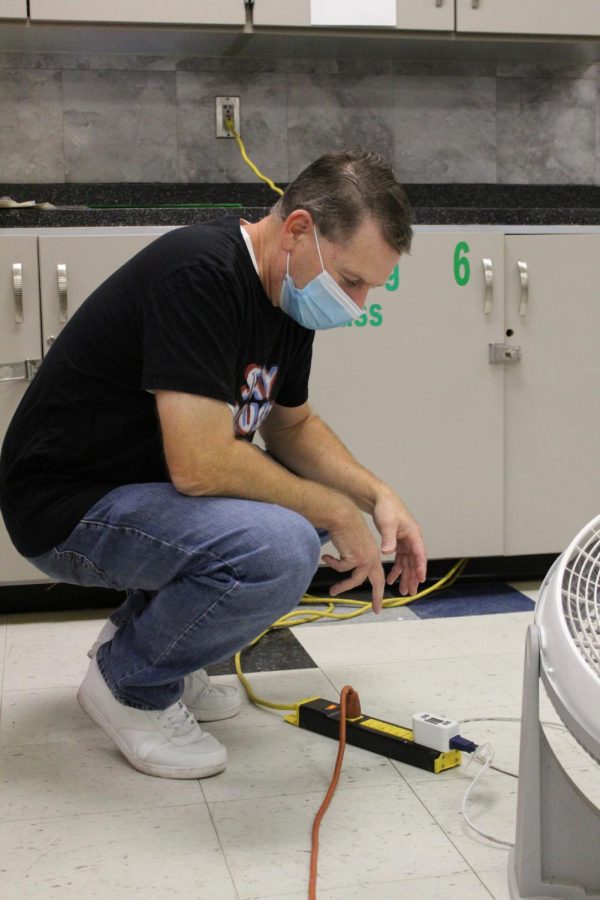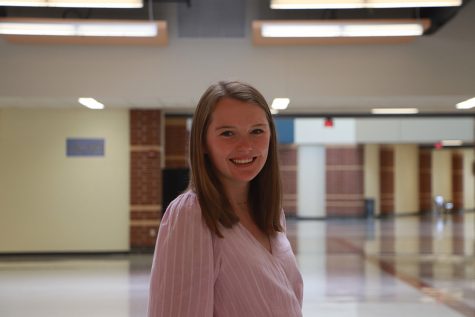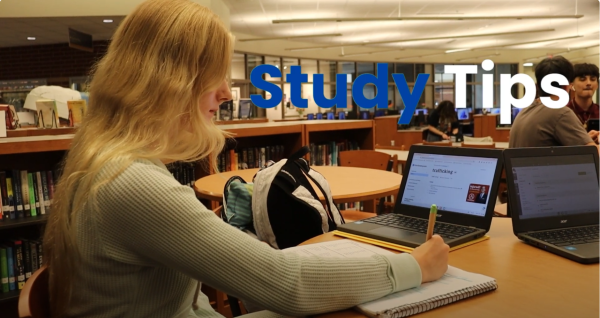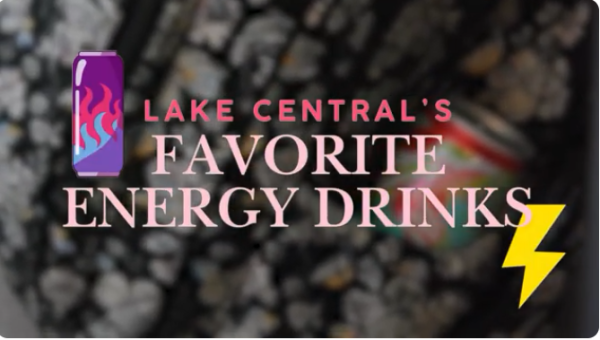Creative Approach to Sanitization
The UVC light is on for about an hour every day. “It’s very fragile, the lightbulb will go into this little encasement so it’s not up all the time, but I have to lower it very slowly because if I go too hard it’s going to break just like a fluorescent lightbulb. It has a remote control so you can set it for different times,” Volk said.
August 24, 2020
COVID-19 has wiped cleaning supplies off of shelves for months, making many name-brand favorites, like Lysol and Clorox, impossible to find. Only those willing to purchase overpriced supplies on Ebay are exempt from finding alternatives.
One idea that a teacher has invested in is a UVC light. Mr. Paul Volk, Art, purchased a UVC light for his classroom this summer. This specific light kills virus molecules lingering in the air and on surfaces.
“With the pandemic going on, everybody is openly looking for the best thing that’s going to give you the best cleaning and sterilization. I started researching the UVC lights and I found this company called BioTech and I talked to their distributors and read a lot about it and they recommend the UV light for my room that has ozone in it,” Volk said.
The light, because of its ozone properties, fills the room with an ozone fog. The ozone is absorbed by virus molecules and eventually kills the virus. The downside, according to Volk, is that it takes several hours for the ozone to disperse.
“The [light] that I have is approximately for a 1,500 square foot room, so I’m pretty comfortable that when I get done this room has been sterilized for about an hour. Then it takes about 2.5 to 3 hours for the ozone to kind of dissipate in here, because you don’t want to breathe it in,” Volk said.
Volk stressed the importance of keeping away from the light when it is on. If inhaled, ozone is an extremely harmful irritant to the lungs. Contact with skin is also dangerous and has the possibility to cause ulcers and just looking at the UV light can also cause severe damages to eyes. Therefore, Volk has placed many signs on his door warning people not to enter.
“I put up mini blinds in my window so that nobody could see the light when it’s on at night. I have my OSHA sign that I had made on my door. I put this sign up so my cleaning ladies know that they don’t have to clean my room at all. I just bring my trash out and they put a new bag in and they don’t have to do anything,” Volk said.
In order to circulate the air, Volk has set up a fan. The fan, as well as the UVC light, are on timers in another effort to keep people out of the room.
“When I come in in the morning the fan will be on from 6:30 a.m. to 2:00 p.m. and then they shut off and I’ll use my light from 2:45 or 2:50 p.m. to 3:30 or 3:45 p.m., and then the fan will kick back on again at 4:00 and they kind of help to disperse the ozone from about 4 to 9:00,” Volk said.
So far, there has not been conclusive research on the effectiveness of UVC lights on COVID-19. However, the UVC light has been known to work on previous strands of coronavirus and most other viruses.
“From what I read, UV light is supposed to be 99.99% effective at killing just about any type of virus. The aerosols could be lingering for a little bit longer so I kind of guarantee myself, at least mentally thinking, that I use this at night and if there are [molecules] in the air from people talking, it’s just going to knock them down and kill them,” Volk said.
Other teachers are also leaving papers in Volk’s class to be hit by the light. Volk is trying to be as paper-free as possible, but for many other teachers, that is harder to do.
“My colleagues in math brought down a lot of papers tonight when I did this, because they are still working with paper and I’m trying to keep myself as paper-free [as possible] in here. So I’m going to hit those tonight and, like I said, any surface that [the light] touches it’s basically going to [sterilize],” Volk said.
Volk wants to see the use of UVC lights around the school and in public spaces in the community. However, the price tag is not cheap, which is a limitation. For the time being, Volk is happy to lend the light to others.
“With shipping and handling this cost me about $600. I was talking to the nurse and I thought if we had an outbreak here at school that I would be more than willing to let her have it just to sterilize that environment just to kind of give [her] peace of mind,” Volk said.

















